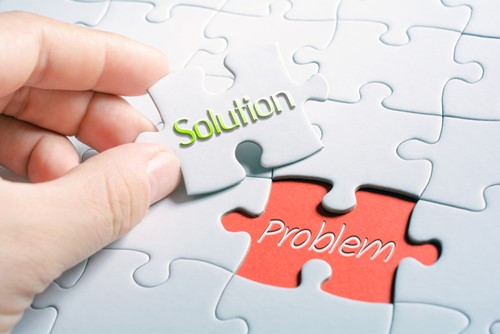By Michael Hilkemeijer
Problem-solving is a fundamental skill that shapes how young children think, explore, and make sense of the world. In early childhood education, fostering problem-solving skills means providing children with opportunities to experiment, collaborate, and develop resilience—all through hands-on, play-based learning.
But how can educators intentionally embed problem-solving activities for preschoolers into their daily routines? And what role does technology play in enhancing these experiences?
In this blog, we’ll explore:
- How problem-solving skills develop in early learning.
- Engaging problem-solving activities for preschoolers that encourage creativity and critical thinking.
- The role of digital technologies in supporting inquiry-based learning.
- How educators can gain structured lesson plans and professional support inside the ICT in Education Teacher Academy.
By the end of this article, you’ll have practical strategies to start embedding problem-solving into your classroom, along with a roadmap for ongoing learning and professional development.
Ready to discover how to make problem-solving a natural part of early learning? Let’s dive in!


Problem Solving in Child Learning and Development
The development of problem solving skills is an essential aspect of learning and development in early childhood education.
What is Problem Solving in ECE?
It is important to know exactly ‘what is problem solving in early childhood education?
It is about a young child being given the opportunity to think creatively, to think through possibilities, reasoning through potential pathways, and using logic to address complex problems or questions.
The experience that young children will gain from safe problem-solving situations will help produce future citizens who will be aware of the importance of information management in the public’s sphere, reliable and adequate information that will facilitate sound discussion.
The integration of ICT in early childhood education has the potential to enhance educational opportunities for young children as it can be applied in a developmentally appropriate manner to encourage purposeful and exploratory play such as problem-solving in a play-centred and responsive early learning environment.
I will delve into this further later.
Why are Problem Solving skills needed?
It would be difficult for adults to learn and develop problem solving skills. While you may be able to improve a skill at any age, the majority of learning occurs during early learning.
Early childhood education is the best time for a child to learn to problem solve in manner that is fun to them. The benefits that they will receive will last for a lifetime.
The importance of problem solving in early childhood learning also lies in the fact that one crucial aspect of problem solving is being able to identify a problem at its early stage so that you can prevent it from escalating into something more serious.
Additionally, when a child builds the foundation for problem-solving skills through establishing relationships, active exploration, and social interaction they are playing a vital role in developing their cognitive capabilities. This, in turn, encourages young children to be more creative as it allows them to view situations from different perspectives.
Another reason why problem solving is important is because not all the problems are the same and so they all require a different solution, and each has an associated function and purpose.
Children face two different categories of problems: physical and social.
Physical problems include situations that could be do with getting food when they are hungry whereas social problems involve conflicts with friends or siblings. It could also involve understanding how to respond if one of your parents is upset. Through understanding these different types of problems or conflicts children begin to understand which type of problem-solving will work best depending on the context.
In the end, this entire process of problem solving in early childhood education exercises their imaginations, creativity, and critical thinking and logic in order to address a difficult situation.
In the following sections, I will discuss how integrating digital technology in early childhood education can help your children thrive with problem solving strategies.

What are Problem Solving skills?
These are the skills that every child needs to survive in this world. When integrating digital technology in early childhood education many of the following examples of problem solving skills for preschoolers can be enhanced and supported. They include:
- Lateral thinking – nurtures a child’s ability to break free from rigid thought patterns to challenge assumptions, and to consider multiple perspectives.
- Creativity – this is about discovering the new and making new connections. Children know best when they are being creative. In the end, creativity is about process and when it relates to digital technology it is not a question about how much technology you use but of using the technology you choose skilfully and imaginatively.
- Analytical thinking -
- Decision-making
- Initiative
- Logical reasoning
- Persistence
- Communication skills
- Negotiation skills
To narrow it down a bit more you could say the five problem solving skills in preschool are:
- The ability to define a problem – many people try to solve a problem before taking the time to understand the problem. Those who can’t solve problems end up wasting their time and effort and even get frustrated. That is why it is critical to help develop problem solving skills in preschoolers.
- The ability to evaluate possible solutions – the next step is to evaluate each solution to your problem which is why it is important to make a list of possible solutions.
- The ability to select the best solution – the next step is to select the best solution which will give you confident to solve the problem at hand.
- The ability to implement the solution – children will need to put in some effort to plan if the solution is to work. If the solution is not implemented properly, the problem will likely persist.
Problem solving and critical thinking are among the most significant skills young children can learn. It is a complex intellectual process involving the coordination of a range of demanding and interrelated skills. They provide children with the foundations for decision-making, logical reasoning, categorising, analytical thinking, negotiation and creativity.
The skills that they will learn include:
- Understanding and representing the problem (including identifying what kinds of information are relevant to its solution);
- Gathering and organising relevant information;
- Constructing and managing a plan of action, or a strategy;
- Using various problem-solving tools;
- Reasoning, hypothesis testing and decision making.
(Siraj-Blatchford & Whitebread, 2009, p. 69)
These are the key problem solving skills in preschoolers and you might find that problem solving might take place when:
- Resolving a fight over the same toy.
- Reaching a ball that’s stuck in a tree.
- Forming a circle while holding hands.
- Making a bridge to connect two block towers.
- Tying or untying a shoe.
- Making up rules for a new game.
It is imperative, therefore, that you provide young children with a caring environment that is rich in appropriately challenging activities that enables them to develop their problem-solving skills and higher order thinking skills.
Why Is Problem-Solving Essential in Early Childhood Education?
Problem-solving is at the heart of early childhood education, equipping young learners with the ability to think critically, make decisions, and navigate challenges. From simple puzzles to technology-enhanced inquiry-based learning, problem-solving activities for preschoolers create the foundation for higher-order thinking. But how can educators ensure that problem-solving is effectively embedded into early learning goals?
Understanding the Cognitive Development of Young Learners
Young children learn best when they engage in active, hands-on experiences that allow them to observe, explore, test ideas, and reflect on their findings. Research suggests that problem-solving plays a crucial role in cognitive, social, and emotional development, as it helps children:
- Develop logical reasoning and decision-making skills.
- Enhance their language and communication through discussion and reflection.
- Build confidence and independence when working through challenges.
- Strengthen their ability to collaborate and think creatively.
Connecting Problem-Solving to Early Learning Goals
Problem-solving is deeply embedded in the Early Years Learning Framework (EYLF), particularly under:
- Outcome 2: Children develop a sense of identity and connectedness by engaging with others and solving problems collaboratively.
- Outcome 4: Children develop thinking, inquiry, and reasoning skills as they explore, experiment, and make decisions.
- Outcome 5: Children use ICT and digital technologies to represent and communicate ideas in problem-solving activities.
The Power of Play-Based Learning in Problem Solving
Problem-solving in early childhood education is most effective when integrated into play-based learning. Children naturally encounter challenges in their play—whether they’re building a structure, creating a story, or navigating a digital activity—and these experiences provide authentic opportunities for educators to guide and scaffold their learning.
How Can ICT and Digital Technologies Support Problem-Solving in Preschoolers?
Integrating technology in early childhood education offers new dimensions to problem-solving by providing:
✔ Interactive simulations and coding games that allow children to explore cause-and-effect relationships.
✔ Digital storytelling that encourages sequencing, logical thinking, and creative problem-solving.
✔ Inquiry-based learning through research and multimedia tools, helping children explore real-world problems.


How the ICT in Education Teacher Academy Helps Educators Embed Problem-Solving in Learning Goals
Through the ICT in Education Teacher Academy, educators can:
- Gain access to structured problem-solving activities designed for preschoolers.
- Learn strategies for embedding ICT into play-based learning, making problem-solving interactive and engaging.
- Participate in the ‘Problem Solving in ECE with ICT’ workshop, where they explore evidence-based teaching strategies.
- Use the membership workbook to plan, track, and reflect on their progress in facilitating problem-solving experiences.
➡ Ready to make problem-solving an essential part of your early learning environment? Keep reading to explore how technology supports problem-solving activities for preschoolers!

How to develop problem solving in Early Childhood Education?
The development of problem solving skills in early childhood education is crucial if these skills are to carry through a child’s life in an effective way that will enable them to make the right decisions for themselves and others.
It is important that as an early childhood practitioner that you follow these steps when problem solving with digital technology in early childhood education.
Building problem-solving skills is a foundational duty of parents and early childhood educators. Seven ways in which you can develop problem-solving skills in early childhood education include:
- Use everyday moments – when it comes to problem-solving in early childhood education there is no textbooks. Encourage problem-solving skills through ongoing interactions with children throughout the day and talk children through the thought process.
- Ask open-ended questions – asking questions is a powerful way to foster both problem-solving and creativity in young children. Promote more learning by allowing young children to think through the question.
- Centre emotions – problem-solving involves emotions and so by providing the words needed to convey those feelings, a child learns what that feeling feels like and can vocabulary in the future to solve a conflict
- Read books and tell stories – research has indicated that not having to deal with a problem that’s happening in the moment is a good way to practice problem-solving. As parents and early childhood educators, you can make your own social stories using pictures of the specific child and their environment. Social stories can be very helpful for children with anxiety about certain activities or routines, as well as with children with disabilities.
- Take advantage of natural curiosities and interests – another approach is in the discovery of something they are authentically interested in learning about.
- Model problem-solving – at this young age, preschoolers will learn a lot just by observing your behaviour as parents and early childhood teachers. Ensure that you allow time for mistakes, meltdowns and for celebration.
- Look to the child for the solution – as within any context, young children may find difficulties in some task or the problem situation itself, the use of the software, or the application of the software to the problem. Therefore, young children must find and overcome, difficulties for learning to occur.
(Rasmussen.edu)
Problem Solving and Playful uses of Digital Technology
Used effectively digital technology in early childhood education can help make an important contribution towards developing young children’s thinking as it can nourish their creativity, confidence as thinkers and learners, and support and enhance problem solving skills in early childhood education.
Digital technology can be applied in a developmentally appropriate manner to encourage purposeful exploratory way. However, if this is to occur then early childhood practitioners need to be well trained and skilled in the integration of digital technology in early childhood education.
When integrating digital technology in early childhood learning environments it is important to adhere to the guiding principles of DATEC (Developmentally Appropriate Technology in Early Childhood). One of these principles highlights the benefits of ICT for problem-solving development: ‘ICT must encourage collaboration’
Today, many of the practices that you apply to promote problem-solving and thinking critically resonate with aspects developed later in relation to computational thinking. Additional skills are learned through these approaches such as:
- Tinkering.
- Creating.
- Debugging (fixing mistakes).
- Persevering and;
- Collaborating.
Given these skills, many of them can be developed in meaningful ways if you effectively integrate digital technology in early childhood education. Good activities for problem solving for preschoolers can be integrated with ICT in key learning areas such as mathematics, creative arts, and science.
Problem solving activities for preschool help children to recognise which information is important, given a wide range of choices. It will help them to plan and work under time pressure as well as being able to make mistakes in a safe environment.
The challenge then for you as the early childhood practitioner is to integrate technologies into your curriculum and planning to maximise the benefits of digital technology in early childhood education.
You need to plan problem solving strategies for preschoolers that involve the use of these developmentally appropriate technologies and develop a learning environment that facilitates and empowers children to make decisions and when it is appropriate to select and use technologies available to support and enhance their learning.
Metacognitive Learning and Problem solving with ICT in Early learning environments
The above problem solving skills for preschoolers are to do with the selection, implementation, monitoring, control and evaluation of ICT techniques and processes, and are metacognitive in nature.
This is the term given to individuals who have the knowledge and control of their own cognitive systems. In relation to integration of digital technology in early childhood education this concept includes both:
- the awareness that individuals have of their own knowledge of ICT techniques and processes, the opportunities and limitations offered by the possible use of those ICT techniques and processes, their beliefs about themselves as learners and the nature of ICT, and;
- their ability to regulate their own actions in the application of that knowledge.
(Kennewell, 2000, p.45)
‘Knowing what you know’ when problem-solving with digital technology in early childhood education is about the knowledge and beliefs that children may have about their own cognitive abilities in a situation, how well they are likely to perform in that situation, the ICT techniques and processes they might be able to use and the nature of the situation itself (Kennewell, 2000).
This is significant with your role in supporting the development of ICT capabilities in early learning environments as it builds on children’s skills, as they have to be able to make realistic assessments about what they can learn. Additionally, it supports their ability to solve problems as they are dependent on metacognitive knowledge, as “problem-solving calls for using efficiently what you know; if you don’t have a sense of what you know, you may find it difficult to be an efficient problem solver” (Schoenfeld, 1987, p. 190 in Kennewell, 2000, p. 47).
Problem solving in early childhood education is about developing decision-making skills and so the issue that you need to remember is that it is not whether children know and ICT technique or process, it is whether they know that they know and are thus able to decide to use it.
The other aspect of metacognition that will occur when you implement key preschool problem solving activities is determining how children feel about using ICT techniques or processes: do they feel positive about using an ICT process? If so, then they are more likely to choose to use it.
It is important to remember that just because children may have knowledge of processes and ICT techniques it does not mean that they will be successful in their application of ICT to problem situations. They must also choose to use that knowledge, to monitor progress being made, and to evaluate the solution gained.
The effective use of digital technology in early childhood education demands such higher order thinking skills as:
- Recognising when the use of digital technology might be appropriate or effective.
- Planning how ICT resources, ICT techniques and processes are to be used in a task.
- Conjecturing, discussing and testing the strategies to be used.
- Monitoring the progress of problem-solving activities.
- Making and testing hypotheses.
Supporting ICT capability in ECE
Problem solving, therefore, is at the heart of developing ICT capability as an ICT capable child is not someone who merely has a secure knowledge and understanding of a wide range of ICT skills in key early learning activities but have the disposition to construct ICT solutions to problems which are appropriate to the context and are based on the knowledge of the opportunities and limitations offered by the digital technology available.
A child’s choice of an effective strategy for a problem is dependent on the knowledge that has been acquired and on their awareness of that knowledge and the realisation that its use would be appropriate.
These children must develop an awareness of the power and limitations of software and hardware systems together with a predilection to seek solutions to situations with digital technology in early childhood education.
Developing ICT capabilities in early learning environments in knowledge and understanding in ICT, therefore, takes a form that is different from progression in other subjects of the early learning curriculum, as it demands an authentic context and a far higher level of child autonomy and problem solving skills in early childhood education.


What digital technology is best for Problem Solving?
As the availability of digital technology is different to everyone it is best to give you the expertise that you need in order to make the decisions.
Problem solving in early childhood education with digital technology depends on whether the children are in control of the technology. This is a key aspect of ICT capability development and your choice of technology needs to take into account whether there is a high level of decision-making by the children in its use.
Examples of problem-solving activities in early childhood would include the integration of content-free software that would ensure that they would intellectually challenged.
Evaluating content-free software for the potential educational use will be important and the following questions need to be addressed:
- What features does the software provide which might be used to extend children’s learning?
- How easy are these features to use?
- Will the children need to be instructed in their use before or during their use of the software?
- What is the educational purpose underlying the child’s use of the software?
(Bennett, 1997, p. 21 as in Kennewell, 2000, p. 105).
Problem solving ICT resources are excellent for engaging young children in higher order thinking skills because instead of requiring the child to simply remember how to apply knowledge in contexts they require children to make connections or develop strategies.
Here are some examples.

Programmable toys
Programmable toys in early childhood education are a fantastic way to enhance preschool problem solving activities. They enhance learning outcomes and promote motivation, engagement and problem solving.
These types of digital technologies brings with them problem solving through programming and so it possible to truly appreciate the usefulness of heuristic approaches to a solution.
The vocabulary used in programming and the necessity to openly discuss the process of problem solving in early childhood education gives children an awareness of the process of problem solving.
Additionally, through this type of reflection by the young children they will gain strength to control the programmable object which are necessary in the selection between alternative routes to the solution, and in the reviewing of ICT resources necessary for problem solving.
This awareness has previously been discussed in another section of this article and is to do with metacognitive processes.
Programmable toys encourage open-ended learning and exploration along with problem solving. However, it is very important for you to remember the importance of the learning context coupled by you as the educator to provide effective interventions to promote motivation and to move learning forward.
Interactive Stories
Today, there is so much evidence that points to the strong features of this type of digital technology in early childhood education. Interactive stories, like computer games, have three features that make it ideal for problem solving activities for preschoolers.
- They are set within a powerful story context to engage the interests of young children and to inspire their imagination.
- Their most common feature is that they all come with alternatives and for the opportunity for young children to make decisions. Thus, making them intrinsically playful and puts them in full control of the digital technology.
- Computer games and interactive stories vividly illustrate to children, direct ways the nature of cause and effect.


Adventure Games
Computer adventure games can provide a playful experience for children to develop their confidence as learners and also opportunities for them to work. They focus on puzzle solving within a narrative framework and support children’s emergent skills as thinkers by allowing them to identify what is useful and what is not in solving a problem.
The best examples of problem solving with technology demand some level of engagement in logical thought and this therefore, provides sufficient cognitive challenges for young children to engage in episodes of sustained shared thinking.
According to Morgan and Siraj-Blatchford (2007, p. 5) sustained shared thinking is “an effective pedagogic interaction, where two or more individuals ‘work together’ in an intellectual way to solve a problem.” Here is an example to approach SST when integrating digital technology in early childhood education:
- Tuning in: listening carefully to what is being said, observing the child’s body language and what they are doing.
- Showing genuine interest: giving their whole attention to the child, maintaining eye contact, affirming, smiling, nodding.
- Respecting the children’s own decisions and choices by inviting children to elaborate: saying things like ‘I really want to know more about this’ and listening and engaging in the response.
- Re-capping: ‘So you think that … ’
- Offering the adult’s own experience: ‘I like to listen to music when I cook supper at home.’
- Clarifying ideas: ‘Right, Wayne, so you think that if we emptied the paintpot into this image it will escape through the gap?’
- Suggesting: ‘You might like to try doing it this way.’
- Reminding: ‘Don’t forget that you said that the paint would spill out of the shape if there was a gap in the line.’ Using encouragement to further thinking: ‘You have really thought hard about where to put this door in the palace – where will you put the windows?’
- Offering an alternative viewpoint: ‘What if the Big Bad Wolf was clever and he escaped because he could feel the heat of the fire coming up the chimney?’
- Speculating: ‘What kind of house would you design to trick even the cleverest wolf?’
- Reciprocating: ‘Thank goodness you saved your picture before the power went off Julie. I wasn’t so careful the other day and I lost all of the reports that I had typed!’
- Asking open-ended questions: ‘What do you think?’
- Modelling thinking: ‘I have to think hard about how to use this ICT technique.’
- Using positive questioning: ‘I don’t know, what do you think.”
(Morgan & Siraj-Blatchford, 2007, p.17)
What do you need to avoid?
Problem solving activities for preschoolers need to avoid these three things:
- Action-type games which do not provide the opportunity for problem solving, creativity and collaboration
- Games which promote gender bias
- Games which contain excessive violence
How Can Digital Technologies Support Problem-Solving in Preschoolers?
How do young children develop problem-solving skills in a digital world? As technology continues to evolve, early childhood educators are presented with new opportunities to enhance problem-solving activities for preschoolers through interactive digital tools. But how can digital technologies be used effectively without replacing hands-on, play-based learning?
Why Technology is a Powerful Tool for Problem-Solving in ECE
Technology in early childhood education should not be viewed as a passive learning tool but rather as a catalyst for inquiry-based learning. When used effectively, digital technologies provide rich problem-solving opportunities by:
✔ Encouraging higher-order thinking through exploration, trial-and-error, and critical thinking.
✔ Offering interactive, developmentally appropriate challenges tailored to a child’s learning level.
✔ Enhancing collaboration and communication by allowing children to document, share, and discuss their learning experiences.
✔ Supporting decision-making and reasoning as children navigate cause-and-effect relationships in digital activities.
What Does Problem-Solving Look Like in a Technology-Integrated Early Learning Environment?
Preschoolers naturally engage in problem-solving through everyday activities, but digital tools can enhance and extend these experiences. Some examples include:
- Coding with Bee-Bots and Cubetto – Encourages sequencing, logic, and debugging skills in a fun, hands-on way.
- Digital Storytelling Apps (e.g., Book Creator, Puppet Pals) – Allows children to create, edit, and problem-solve while developing literacy and creativity.
- Interactive Whiteboards and Touchscreen Activities – Help children solve puzzles, sort objects, and explore patterns in a multisensory way.
- Augmented Reality (AR) Exploration – Apps like Quiver or Merge Cube engage children in problem-solving in real-world contexts, such as exploring the solar system or dissecting virtual animals.
- Virtual Building Blocks & STEM Games – Digital construction tools like Toca Builders or LEGO Education encourage spatial awareness, planning, and problem-solving.
Addressing Concerns: Is Technology Making Children Passive Learners?
One of the biggest concerns in technology in early childhood education is that screen time might replace hands-on learning. However, research shows that when technology is used actively and purposefully, it can enhance engagement, encourage creativity, and improve cognitive development.
💡 Key considerations for effective technology use in problem-solving:
- Ensure active engagement – Children should interact with digital tools, not just consume content.
- Encourage collaboration – Technology should facilitate peer interaction and discussion, rather than isolate learners.
- Use developmentally appropriate tools – Select apps, games, and software that align with early learning goals.
- Balance tech with real-world play – Digital tools should complement, not replace, physical exploration and hands-on problem-solving.
How the ICT in Education Teacher Academy Supports Educators in Digital Problem-Solving Integration
Not sure where to start with integrating problem-solving and ICT? The ICT in Education Teacher Academy provides:
✔ A structured workshop on ‘Problem Solving in ECE with ICT’, guiding educators on best practices for digital learning.
✔ Done-for-you lesson plans that incorporate problem-solving activities for preschoolers using technology and play-based learning.
✔ Step-by-step guidance in the membership workbook, helping educators track how problem-solving is being developed in their classroom.
✔ Ongoing mentorship and support, ensuring that educators feel confident in embedding technology-enhanced problem-solving in early learning.
➡ Want to explore the best problem-solving activities for preschoolers? Keep reading to discover hands-on and digital activities you can implement today!
What Are the Best Problem-Solving Activities for Preschoolers?
How Can Educators Use Technology to Enhance Problem-Solving Activities for Preschoolers?
Young children develop essential cognitive skills when they engage in problem-solving activities for preschoolers, especially when supported by technology-based tools. The key to successful technology integration is ensuring that children are actively engaged, making decisions, and using logical reasoning rather than passively consuming content.
How the Membership’s Preschool Activities Promote Problem-Solving Skills
The ICT in Education Teacher Academy provides structured, evidence-based lesson plans that integrate technology and problem-solving activities for preschoolers. These activities are designed to:
✔ Encourage active exploration through interactive digital tools.
✔ Promote critical thinking by guiding children through decision-making processes.
✔ Develop ICT capabilities in a fun, play-based learning environment.
✔ Provide progressive learning experiences, ensuring that children develop their skills step by step.
A Unique, Collaborative Learning Approach: Learning from Fellow Educators
Unlike other professional development programs, the ICT in Education Teacher Academy thrives on community-driven learning. Many of the problem-solving activities and lesson plans available to members come not just from our expert-created resources, but also from real educators in the field—teachers and early childhood professionals who actively share and contribute their experiences and innovations.
✔ Why is this beneficial?
- Peer-driven learning: Gain insights and strategies from educators who have tested these activities in real classrooms.
- Continuous improvement: Lessons are refined and improved over time based on member feedback.
- Diverse perspectives: Access varied approaches to problem-solving in early childhood education from teachers worldwide.
- Community support: Engage in discussions, ask questions, and receive real-time guidance on implementing activities effectively.
Examples of Problem-Solving Activities for Preschoolers Using ICT
The Problem Solving in ECE with ICT workshop inside the membership includes hands-on, technology-enhanced activities that support problem-solving skills in preschoolers. Below are some lesson plan examples, some created by our team and others shared by our dedicated members:
✅ Bee-Bot School Bus Challenge (Member-Created Activity)
- Activity: Children create a street circuit for a Bee-Bot programmable toy and role-play as a school bus driver. They navigate the route to pick up school children, adjusting to obstacles and planning new routes.
- Skills Developed: Spatial awareness, sequencing, cause-and-effect thinking.
- EYLF Connection: Children engage in play, reflection, and investigation to solve problems (EYLF 4.4, 4.5, 5.5)Preschool lesson plan B….
✅ Abstract Art with Bee-Bot (Academy-Created Activity)
- Activity: Children attach colored markers to a Bee-Bot, program its movements, and watch it create abstract art. They reflect on how different commands change the artwork’s patterns.
- Skills Developed: Creativity, sequencing, spatial reasoning.
- EYLF Connection: Encourages creativity and problem-solving through play (EYLF 4.4, 4.5, 5.5)Problem solving activit….
✅ Adventure Games for Problem-Solving (Member-Created Activity)
- Activity: Children play interactive adventure games like ‘Bob’s Castle Adventure’ and ‘Darryl the Dragon,’ where they need to solve puzzles, make decisions, and manage resources.
- Skills Developed: Decision-making, reasoning, adapting strategies.
- EYLF Connection: Children engage with simulation-based problem-solving (EYLF 4.2, 4.4, 5.5)Problem solving activit….
✅ Turning the Bee-Bot into a Butterfly (Academy-Created Activity)
- Activity: Children design and craft flowers for a Bee-Bot to navigate. They program the Bee-Bot to visit each flower and collect tokens, mimicking a butterfly pollinating plants.
- Skills Developed: Logical thinking, sequencing, creativity.
- EYLF Connection: Supports creative problem-solving through role-play and technology (EYLF 4.4, 4.5, 5.5)Problem solving activit….
✅ Taking Apart a Computer (Member-Created Activity)
- Activity: Children are given a non-working computer tower and tools to take it apart safely, learning about its components. They problem-solve by figuring out how the parts fit together.
- Skills Developed: Logical reasoning, hands-on exploration, understanding real-world technology.
- EYLF Connection: Supports manipulating and investigating ICT in everyday life (EYLF 4.4, 4.5, 5.5)Problem solving activit….
How These Activities Fit into the Membership Learning Journey
The ICT in Education Teacher Academy’s Success Path ensures that members don’t just collect lesson plans—they progress through a structured learning journey:
✔ Stage 1 – Adoption: Members start with done-for-you activities to gain confidence in integrating ICT.
✔ Stage 2 – Adaptation: Members modify and expand on activities based on their children’s needs.
✔ Stage 3 – Infusion: Members seamlessly integrate problem-solving activities across multiple learning areas, embedding technology as a natural part of children’s play and inquiry-based learning.
✔ Stage 4 – Transformation: Members apply evidence-based ICT strategies independently, creating a technology-rich problem-solving environment where children develop deeper cognitive and problem-solving skills.
Why These Activities Save Educators Time and Improve Teaching Outcomes
Instead of spending hours searching for problem-solving activities, members instantly access ready-made, research-backed lesson plans. More importantly, they gain the pedagogical understanding of why and how these activities work, ensuring long-term success.
✅ A Community of Educators Learning Together
A key part of the ICT in Education Teacher Academy’s Success Path is that learning doesn’t happen in isolation. Members contribute, refine, and build on one another’s work, creating a rich library of problem-solving activities for preschoolers and primary students that evolve with real-world teaching experiences.
✔ Collaborate with experienced educators who share best practices for problem-solving activities.
✔ Receive peer feedback and mentorship on implementing ICT-based problem-solving activities.
✔ Develop your skills while helping others refine theirs—a learning community built for growth.
➡ Ready to embed problem-solving activities into your ECE curriculum with ease? Join the ICT in Education Teacher Academy today and become part of a growing network of educators transforming early learning!
How Can Problem-Solving Activities Support Primary Students’ Learning with ICT?
How Can Technology-Integrated Problem-Solving Activities Enhance Primary Education?
Problem-solving is a fundamental skill that primary students need to develop in order to navigate real-world challenges. By integrating problem-solving activities for primary students with technology, educators can create dynamic, inquiry-based learning environments where students explore, experiment, and develop higher-order thinking skills.
How the ICT in Education Teacher Academy Helps Primary Educators Implement Problem-Solving Strategies
As children transition from early childhood education to primary school, problem-solving remains a critical skill, evolving from exploratory play to structured inquiry and real-world application. In primary education, technology-driven problem-solving activities help students enhance their logical thinking, decision-making, and collaborative skills while bridging the gap between digital play and academic learning.
Educators who have begun exploring problem-solving activities for preschoolers with ICT in early childhood settings can continue this learning journey in primary education by deepening students' engagement with technology-enhanced problem-solving challenges.
How the ICT in Education Teacher Academy Supports Primary Educators in Fostering Problem-Solving Skills
The ICT in Education Teacher Academy ensures that the problem-solving journey doesn’t stop at early childhood education. Through the membership, educators gain access to:
✔ Step-by-step professional development on integrating problem-solving strategies with ICT.
✔ Done-for-you lesson plans designed to scaffold digital problem-solving skills for primary students.
✔ A collaborative learning community, where members share, refine, and co-create innovative problem-solving activities.
✔ Ongoing mentorship and training on inquiry-based learning, STEM integration, and computational thinking.
What Are Some Technology-Based Problem-Solving Activities for Primary Students?
As students enter primary school, problem-solving activities become more structured, requiring them to analyze information, apply logical reasoning, and develop solutions using ICT. Here are some activities that help bridge early childhood play-based problem-solving with primary education’s academic problem-solving approach:
✅ Designing Digital Escape Rooms
- Activity: Students collaborate to solve math, science, or literacy puzzles using Google Forms, Breakout EDU, or Microsoft OneNote.
- Skills Developed: Logical reasoning, teamwork, perseverance.
- Membership Connection: The Academy provides pre-made digital escape room templates and training on how to create them.
✅ Programming and Computational Thinking Challenges
- Activity: Using Scratch, Tynker, or Code.org, students create interactive programs that solve real-world problems, such as designing a game to teach healthy eating habits.
- Skills Developed: Sequencing, debugging, problem-solving, computational thinking.
- Membership Connection: Members access structured coding lesson plans and learn how to integrate programming across the curriculum.
✅ Engineering and Design Thinking with Digital Simulations
- Activity: Students use Tinkercad, PhET Simulations, or Minecraft Education to design bridges, simple machines, or city layouts that solve real-world challenges.
- Skills Developed: Critical thinking, STEM problem-solving, creativity.
- Membership Connection: Academy workshops teach educators how to facilitate STEM challenges using digital simulations.
✅ Mathematical Problem-Solving with Spreadsheets
- Activity: Students use Google Sheets or Microsoft Excel to track real-world data, such as measuring local weather patterns or managing a class economy.
- Skills Developed: Data analysis, numeracy, logical reasoning.
- Membership Connection: Members receive custom spreadsheet lesson plans to simplify classroom integration.
✅ Inquiry-Based Digital Research Projects
- Activity: Students use digital tools like Google Search, Padlet, or Canva to investigate a real-world issue (e.g., pollution, deforestation), then present their findings in an interactive format.
- Skills Developed: Information literacy, research skills, problem-solving, presentation skills.
- Membership Connection: The Academy offers best practices for guiding digital inquiry projects.
From Structured Learning to Independent Problem-Solving: How the Membership Supports Progression
The ICT in Education Teacher Academy is designed to help educators facilitate problem-solving activities in a way that progresses from guided learning to independent inquiry.
✔ Stage 1 – Adoption: Members start by using ready-to-go problem-solving lesson plans to introduce ICT-based activities.
✔ Stage 2 – Adaptation: Educators begin modifying and personalizing activities to meet their students’ needs.
✔ Stage 3 – Infusion: Technology-enhanced problem-solving becomes a regular part of teaching and learning across multiple subjects.
✔ Stage 4 – Transformation: Educators create their own technology-rich problem-solving projects and mentor others in best practices.
Just like in early childhood education, problem-solving with ICT in primary education thrives when educators are supported with structured learning pathways, collaboration, and hands-on training.
Why Community Sharing is Key to Developing Problem-Solving Skills with ICT
In early childhood education, collaboration is foundational—young children learn by observing, experimenting, and sharing their discoveries. This collaborative learning model continues in primary education, where peer discussion, reflection, and shared problem-solving experiences help deepen understanding.
Inside the ICT in Education Teacher Academy, members:
✔ Share problem-solving lesson ideas that have worked in their classrooms.
✔ Discuss challenges and receive feedback from fellow educators.
✔ Refine their teaching strategies with real-world input from experienced members.
✔ Co-develop new activities, ensuring that lesson plans evolve with technological advancements.
Rather than searching for new problem-solving activities for primary students, members can access a rich library of community-curated resources, saving time while enhancing their students’ learning experiences.
Why Membership Saves Educators Time and Improves Teaching Outcomes
Rather than spending hours designing technology-based problem-solving lessons, members immediately access structured activities and professional learning resources that ensure problem-solving is an integral part of daily learning.
✔ Workshops that teach evidence-based ICT teaching strategies.
✔ A growing library of problem-solving lesson plans for different age groups.
✔ Support from experienced mentors and fellow educators.
✔ Best practices for aligning problem-solving activities with curriculum objectives.
🚀 Are you ready to take problem-solving with technology to the next level in your primary classroom?

Bringing It All Together: Why Problem-Solving with ICT is Essential for ECE and Primary Education
Problem-solving is more than just an academic skill—it’s a lifelong ability that prepares children to think critically, adapt, and overcome challenges. By embedding problem-solving activities for preschoolers and primary students into early learning environments, educators empower young minds to engage with technology in meaningful and developmentally appropriate ways.
Throughout this article, we’ve explored:
🔹 How problem-solving develops in early childhood and primary education.
🔹 The role of digital technologies in supporting inquiry-based learning.
🔹 Technology-enhanced problem-solving activities that foster critical thinking.
🔹 The importance of professional development in integrating ICT into problem-solving.
The ICT in Education Teacher Academy exists to support educators at every stage of this journey. Whether you are:
✔ Just beginning to explore problem-solving activities with digital tools.
✔ Looking for structured lesson plans that integrate ICT into problem-solving.
✔ Ready to deepen your teaching practice through mentorship and professional learning.
The Academy provides the resources, community support, and expert guidance you need to confidently embed technology-rich problem-solving into your teaching.
🚀 Take the next step in transforming your classroom with ICT!

